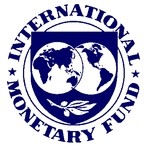 Romania’s investment needs are large. Public investment is already relatively high by European standards, but it is of low quality. Thousands of investment projects are underfinanced or even abandoned, according to the newest report published by the International Monetary Fund (IMF). Moreover, the poor quality and low level of investment relative to what is needed in sectors dominated by the state-owned enterprises (SOEs), such as transportation and electricity, are detrimental to perceptions of the quality of the infrastructure in those sectors. This undermines perceptions of Romania as a place to do business. Romania ranks 74 out of all countries on the World Bank’s Doing Business Index with sub-index on electricity being Romania’s worst relative ranking. In the competitive global environment for investment financing, these rankings do not help Romania’s case for attracting more investment. Moreover, the fiscal targets and the planned ajustment path going forward appear to be conservative. It prudently leaves considerable margin for cyclical fluctuations and uncertainties in measuring output gap, based on historical standards, to ensure compliance with SGP requirements. The target also seeks to accommodate projected agerelated spending increases even as reforms of pensions and healthcare are also underway. Much of the adjustment towards the medium term target has already been implemented or is underway this year. Given this fiscal position, there is some scope to target a higher mediumterm structural fiscal target that is consistent with the minimum necessary under the FC (1 percent of GDP) and to undertake reforms that can help address fiscal sustainability without jeopardizing short-term growth. On the expenditure side, the size and duration of unemployment insurance can also play an important stabilizing role. In Romania, the size of unemployment insurance is relatively small, although this is partially a reflection of the underlying informal sector. Therefore, such tax and benefit structures are not uncommon amongst emerging economies, however, which suggests that there are other considerations limiting the size of automatic stabilizers. For instance, automatic stabilizers may be limited by the financing constraint. A larger size of government, which would necessitate higher taxes, may also be constrained by efficiency considerations. Increased progressivity of the income tax regime would help meet both stabilization and equity objectives. However, high marginal tax rates could have adverse effects on efficiency and create disincentives to search for work.
Romania’s investment needs are large. Public investment is already relatively high by European standards, but it is of low quality. Thousands of investment projects are underfinanced or even abandoned, according to the newest report published by the International Monetary Fund (IMF). Moreover, the poor quality and low level of investment relative to what is needed in sectors dominated by the state-owned enterprises (SOEs), such as transportation and electricity, are detrimental to perceptions of the quality of the infrastructure in those sectors. This undermines perceptions of Romania as a place to do business. Romania ranks 74 out of all countries on the World Bank’s Doing Business Index with sub-index on electricity being Romania’s worst relative ranking. In the competitive global environment for investment financing, these rankings do not help Romania’s case for attracting more investment. Moreover, the fiscal targets and the planned ajustment path going forward appear to be conservative. It prudently leaves considerable margin for cyclical fluctuations and uncertainties in measuring output gap, based on historical standards, to ensure compliance with SGP requirements. The target also seeks to accommodate projected agerelated spending increases even as reforms of pensions and healthcare are also underway. Much of the adjustment towards the medium term target has already been implemented or is underway this year. Given this fiscal position, there is some scope to target a higher mediumterm structural fiscal target that is consistent with the minimum necessary under the FC (1 percent of GDP) and to undertake reforms that can help address fiscal sustainability without jeopardizing short-term growth. On the expenditure side, the size and duration of unemployment insurance can also play an important stabilizing role. In Romania, the size of unemployment insurance is relatively small, although this is partially a reflection of the underlying informal sector. Therefore, such tax and benefit structures are not uncommon amongst emerging economies, however, which suggests that there are other considerations limiting the size of automatic stabilizers. For instance, automatic stabilizers may be limited by the financing constraint. A larger size of government, which would necessitate higher taxes, may also be constrained by efficiency considerations. Increased progressivity of the income tax regime would help meet both stabilization and equity objectives. However, high marginal tax rates could have adverse effects on efficiency and create disincentives to search for work.***
The paper on Romania summerized here was prepared by a staff team of the International Monetary Fund as background documentation for the periodic consultation with the member country. It is based on the information available at the time it was completed on September 13, 2012. The views expressed in this document are those of the staff team and do not necessarily reflect the views of the government of Romania or the Executive Board of the IMF. To download a free copy of the document click here





